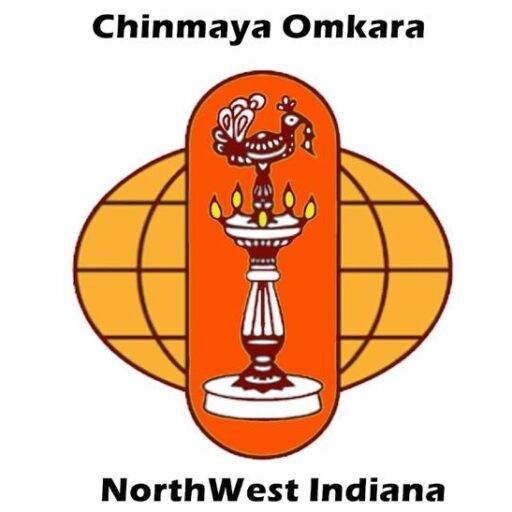Upanishad Course – Chapter 7
Week 13
Lord Shiva is also known as ‘Ganesha’, Master of that which can be counted (Gunas, States, etc).
Another name for Lord Shiva is ‘Ganateeta’, one who is beyond that which can be counted. In Sw. Chinamayananda’s BMI chart, there is OET (objects, experiences and things) at the bottom.
There are a variety of OET around us, there exists a lot of Varnas (colors, varieties).
As we move up the BMI chart, the Varnas turn into Avarna (variety gets reduced progressively), that which has no color.
Om has no color. Whether viewed from Bhakti or Jnana perspective, the vision of the Upanishad course is that there is more to us than who we feel we are.
In Upanishad, ‘sad’ means to destroy, destroy the sense of individuality. We are ‘Para’ (highest) and ‘gudhah’ (deepest).
This means we are more than a body and thought.
Just as destruction of a building needs to be done in a controlled manner, we are all fortunate that we are guided by SadGuru Sishya parampara on our journey towards destroying the ego.
Recap of
First lesson is titled ‘Introduction’. Upanishads are contained in the Vedas.
The Veda is a Shastra (Science) and teaches two subjects only, Dharma (how to live prosperously) and Brahma (how to live peacefully).
Bhagavan expresses as a Shastra. If we follow Dharma, we will reach Brahma of Bhagavan.
To appreciate the Upanishads, the design flows through four facets: 1. Adhikari or Disciple 2. Vishaya or subject, 3. Prayojana or purpose, 4. Sambandha or connection.
Second lesson is titled Adhikari. Disciple is one who is strong in Viveka and Vairagya.
Adhikari is using these qualities against the world productively.
They know that the world is changing and not dependable.
Also shared in the lesson is qualitites of a Guru.
Guru is one who is strong in Nishtha (experience) and Shrotriya (eloquence).
Lesson three focuses on the sampatti (virtues) and mumukshutva (desire for freedom).
Discrimination, detachment, discipline and desire (for desirelessness) are the four qualities of a strong disciple.
Disciple already has the Sadhana chatushtaya which helps them to engage in authentic and deep sadhana.
They have a balanced and focused mind that they are using for reflection and enquiry
Lesson four focuses on enquiry. A disciple focuses on enquiry into who they are.
Fulfilment of the enquiry is that they are not Jeeva or ego instead they are Atma or existence.
Another way to enquire is to enquire into what the Jagat is.
The fulfilment of this enquiry is that the Jagat is Brahma.
Lesson five takes up this vichara in the direction of Atma (Atma vichara).
Our masters teach us that all of us have two levels of identities.
The relative identity is what we are living (body, responsibilities).
This implies that there has to be an absolute if there is a relative.
Enquiry should be on absolute identity.
This can be done by choosing Shreya (extraordinary) instead of Preya (ordinary).
To not live by instinct but live by vision instead.
Lesson six is a continuation of lesson five and a continuation of vichara in the direction of Atma.
The lesson introduces Maya. Maya= Ma+yah (Ma=not, yah=is). Maya means ‘is not’. We do not have a relative identity!
Which also means we do not have an absolute identity. We are just Being!
Even the word oneness strongly indicates we identify with twoness.
When Maya is personalized, we call this Avidya, forgetting one’s nature.
Continuing lesson six, Kaivalya Upanishad section 1 verse 13 has been referenced.
The verse goes on to say that in a dream, the ego experiences pleasure and pain.
The dream is one’s own projection.
Conversely, in sleep all of this projection is merged because of Tama/darkness/ignorance.
All one experiences is pleasure.
In the waking state, body, mind and ego are present/operational.
In the dream state, mind and ego are functioning.
In sleep state, the ego is the only one functioning in a subtle manner.
These states or Avasthas keep coming and going.
In the waking state there is Karta (doer) and bhokta (deserver).
When we are dreaming, there is a bhokta but not an immediate karta because the dreams are the result of actions done in the waking state.
We are not aware of our body in the dream state.
When we are asleep its as if there is no bhokta or karta.
There is pleasure, and we think that way because there are no equipments to experience pain.
Our prarabdha karma wakes us up from the ‘pleasure filled’ sleep state. Compelled by the need to evolve, Jeeva wakes up to exist in the waking state.
Practice in waking state (lessons from dream state): give less importance to the look of the body
Practice in waking state (lessons from sleep state): Project less names on to others, have less likes and limits
Lesson 7: This lesson is on Brahma vichara. Reference has been given here of Mundaka Upanishad, Section 2 chapter 1 verse 2.
Atma is many times described as ‘Paramatma’.
The ‘param’ is redundant as there is nothing nearer to you than Atma.
The reason this word is introduced because we intensely identify with our limits.
The word ‘param’ is inserted to help us know that there is a higher and deeper facet to who we are.
We cannot live in an ordinary way and expect the teachings to become our reality.
We have to live in an extraordinary way to disidentify with our limits.
This creates only Atma vasanas, the blueprint that I am Atma.
In the above verse, the rishi is describing the Infinite using phrases and meanings that we know to shift us to that which we don’t know.
Tatastha lakshana (explanation through association) which leads one to Svarupa lakshana (explanation intrinsically).
Brahma is divya (Div=shine, divya=shinining one).
Awareness is one that is self shine (Svayam jyoti), Amurta (no form), purusha (complete), Bahya and abhyantara (outside and inside), Aja (that is not born).

